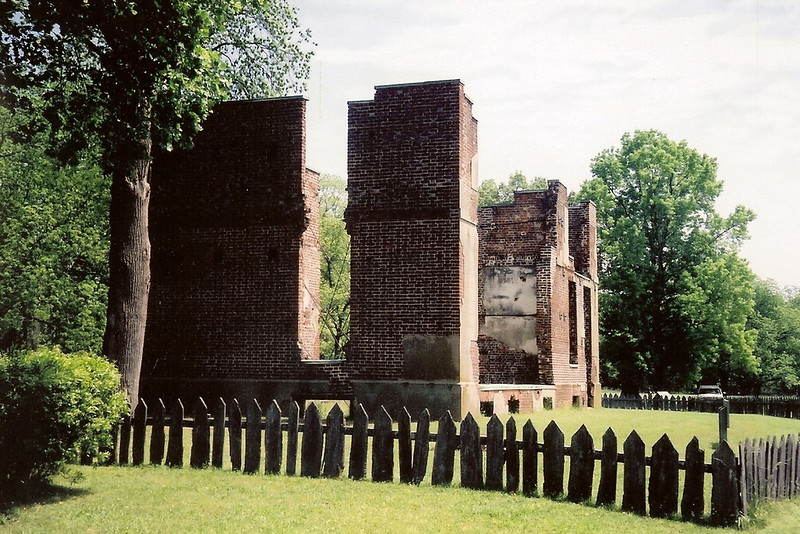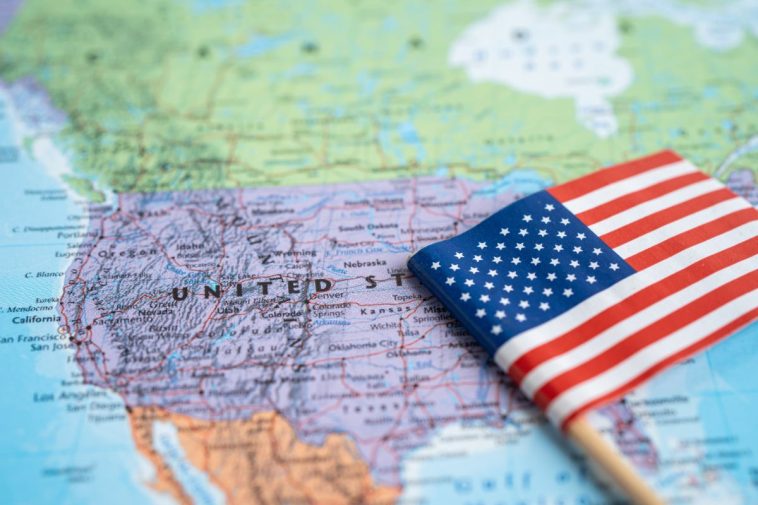As the United States looks forward to its future, it’s equally important to cast a glance backward—to the very roots that helped shape the nation. This journey into history takes us to charming cobbled streets, venerable buildings, and sites teeming with stories that have been passed down through generations. While the concept of ‘old’ in the United States may not compare to the ancient histories of other continents, America’s oldest towns offer a fascinating glimpse into the early days of a nation in the making.
1. St. Augustine, Florida (1565): America’s Oldest City

St. Augustine is the oldest European-founded settlement in the contiguous United States that has been continuously inhabited. Spanish naval officer Pedro Menéndez de Avilés established it in 1565, and a contract was bestowed upon him by the Spanish monarchy (specifically signed by King Philip II) that same year. The contract not only granted Menéndez the title of “adelantado of Florida” but also conferred upon him extensive rights to develop the sprawling territories referred to as Spanish Florida or “La Florida” by the Spaniards. His mission, as outlined in the contract, was to scout the Atlantic shoreline of the region, identify its characteristics, and select an appropriate site for a lasting settlement. This would serve as a protective base for the Spanish treasure fleets and a bulwark against territorial infringements from other European nations.
The first European credited with the exploration of Florida’s coasts was Juan Ponce de León, a Spanish explorer and the then-governor of Puerto Rico. In what is believed to be the year 1513, he likely traveled as far north as the area that would later become St. Augustine. He dubbed the landmass he presumed to be an island “La Florida,” laying claim to it on behalf of Spain. Prior to the establishment of St. Augustine in 1565, there were numerous unsuccessful endeavors to colonize the present-day state of Florida, undertaken by both Spanish and French expeditions.
Beginning in 1562, French exploration of the region was initiated under the leadership of Huguenot settler Captain Jean Ribault. He navigated the St. Johns River, which is situated north of St. Augustine, before proceeding further north along the Atlantic seaboard. Eventually, he founded Charlesfort, which was short-lived and is currently identified as Parris Island in South Carolina. In 1564, René Goulaine de Laudonnière, who had been Ribault’s subordinate, spearheaded another attempt at colonization. He investigated the area around St. Augustine Inlet and the Matanzas River, eventually shifting his focus northward to the St. Johns River.
2. Santa Fe, New Mexico (1607)

As New Mexico’s capital, Santa Fe ranks as its fourth most populous city, recording 87,505 residents in the 2020 census.
Santa Fe means “Holy Faith” in Spanish, and when it was first founded, its complete name was La Villa Real de la Santa Fé de San Francisco de Assís, which translates to “The Royal Town of the Holy Faith of Saint Francis of Assisi.”
Before European settlers began arriving, the region that would become Santa Fe was recognized by the indigenous Tewa community as Oghá P’o’oge, meaning “white shell water place,” and by the Navajo as Yootó, combining the words for “bead” and “water place.” In the year 1598, Juan de Oñate designated this land as Santa Fe de Nuevo México, transforming it into a province under the dominion of New Spain.
Remarkably, Santa Fe came into existence as a small assemblage of European-style structures thirteen years before the establishment of Plymouth Colony by the Mayflower Pilgrims. It swiftly ascended as the administrative center for the Spanish colonial empire northward of the Rio Grande river. It bears the distinction of being both the oldest state capital in the United States and the most aged European-founded settlement to the west of the Mississippi River. Although there were modest settlements in Santa Fe as early as 1607, it was truly founded and developed by the conquistador Don Pedro de Peralta between 1609 and 1610.
3. Jamestown, Virginia (1607)

In 1607, Jamestown, Virginia emerged as the inaugural enduring English community in the New World. Initially christened “James Fort” by its sponsor, the Virginia Company of London, the settlement gained the status of permanency following a short-lived desertion in 1610. Named in honor of King James I, Jamestown was situated on the northeastern shore of the James River, approximately 2.5 miles to the southwest of what is now the heart of Williamsburg. The expedition to Virginia set sail on December 6, 1606, aboard a trio of vessels: the Susan Constant, the Godspeed, and the Discovery. Upon reaching North American soil in 1607, 104 English males disembarked to establish a new settlement.
The location for Jamestown was carefully chosen based on several criteria, such as its strategic defensibility against potential Spanish assaults and its deep-water access, which allowed ships to anchor close to the shore. Edward Maria Winfield assumed the role of the first President of the fledgling Virginia colony. The other six members of the governing council were Bartholomew Gosnold, Christopher Newport, John Martin, John Ratcliffe, George Kendall, and John Smith. By June 15, a triangular fortification had been erected, fortified at each of its three corners with a bulwark housing four or five artillery pieces.
The settlers’ interaction with the native Powhatan Indians was a blend of cooperation and tension. Shortly after Captain Newport departed for England to fetch additional supplies, the settlers began to suffer from various illnesses. Their conditions were exacerbated by drinking from the brackish or contaminated river, leading to multiple fatalities. Amid the scarcity of food, Chief Powhatan intervened by sending food supplies to assist the beleaguered English. However, by the end of 1609, the alliance between the Powhatan Indians and the English settlers had deteriorated, partly because the English were over-exerting their demand for food during a period of drought.
The subsequent winter, spanning 1609-1610, came to be infamously known as the “Starving Time.” During this harsh season, the English settlers were too fearful to venture outside their fortifications, owing to a genuine threat of violence from the Powhatans. Driven by desperation, they consumed whatever was available: all kinds of animals, leather items, and even the bodies of deceased fellow settlers.
READ MORE: The 5 Deadliest Floods in American History
4. Hampton, Virginia (1610)

Founded in 1610, Hampton, Virginia holds the distinction of being the earliest uninterrupted English-speaking community in the United States. The city has been a locus of several seminal moments in American history, including the establishment of the country’s first continuous English-speaking settlement, the inception of America’s first free public education, and the training ground for NASA’s inaugural astronaut corps. Situated at the nexus of the Chesapeake Bay and the James River, Hampton’s geographical location has played a pivotal role in shaping key episodes in the annals of the nation.
The city’s history provides a multifaceted lens through which to understand the broader sweep of American history, from initial colonization to education, enslavement, warfare, and modern advancements in technology. For millennia before European contact, the area was a bountiful source of seafood, game, and crops for indigenous populations. The Native American community of Kecoughtan was a significant part of Powhatan’s influential confederation just before the Europeans arrived.
During the Civil War in 1861, rather than fall into the hands of Federalist forces, Hampton was incinerated by its own military units. Before this devastating fire, the city was home to over 100 residences and 30 commercial enterprises.
Originally called Kikotan, with variations in spelling like Kiccowtan and Kikowtan, this area in Virginia was inhabited by Algonquian Native Americans when Captain John Smith and his crew first landed in the Hampton Roads region in 1607. During the 1600s, what is now recognized as Hampton, Virginia, was known as Kecoughtan. By the early 20th century, another nearby locale in Elizabeth City County also bore the name Kecoughtan, before being incorporated into the City of Newport News in 1927.
Upon their arrival in 1607, Captain John Smith and his settlers were greeted for the first time at the Kecoughtan village. The relationship between the tribe and the settlers remained mostly amicable until the summer of 1609. At that time, President John Smith instructed Captain Martin to forcibly seize an island populated by the Nansemond tribe, situated across the mouth of the James River. During this expedition, a contingent of 17 men rebelled against Captain Martin and fled to Kecoughtan with the intent of purchasing corn. There, they met their end, all being killed. Subsequently, Martin abandoned the Nansemond island and retreated back to Jamestown.
6. Newport News, Virginia (1613)

The city of Newport News, Virginia boasts a rich history that stretches back to the early days of the Jamestown settlement. This area has gone through various incarnations and names, including Elizabeth Cittie, Warwick River Shire, Warwick County, and Warwick City, before finally becoming the independent city of Newport News. Soon after Jamestown was founded in 1607, English explorers and settlers started to populate areas neighboring Hampton Roads. In 1610, Sir Thomas Gates claimed a local Native American village that later came to be identified as Kecoughtan. By 1619, the land that would become Newport News was encompassed within one of the four massive corporations overseen by the Virginia Company of London and was christened Elizabeth Cittie.
By 1634, Virginia’s English colony was home to roughly 5,000 people and was reorganized into eight shires, which were soon after renamed as counties. Newport News became a part of Warwick River Shire, which was rebranded as Warwick County in 1637. Fast forward to 1810, and Denbigh had become the county seat. However, in the late 1800s, the seat of the county was briefly relocated to Newport News.
7. Albany, New York (1614)

With a storied past that spans over four centuries, Albany, New York holds a significant place in American history. The land was initially the home of the Mohican tribe, an Algonquian Indian group, as well as the Iroquois Confederacy. Among the Iroquois, the easternmost tribe, the Mohawk, had the most extensive interactions with Albany’s early traders and settlers. The Dutch explorer Henry Hudson laid claim to this territory in 1609. A European settlement was first established here by fur traders in 1614, and Albany received its official city charter in 1686. It became New York’s capital in 1797, succeeding Poughkeepsie. The city is not only one of the remaining settlements from the original Thirteen Colonies but is also the oldest continuously chartered city in the United States.
The modern city of Albany traces its roots to two Dutch trading forts: Fort Nassau, founded in 1614, and Fort Orange, established in 1624. These forts, vital for the fur trade, attracted settlers who eventually formed a village around Fort Orange, naming it Beverwijck. The English seized control of the area in 1664 and renamed the settlement Albany to honor the then Duke of Albany, who would later become James II of England and James VII of Scotland.
READ MORE: America’s 5 Oldest General Stores
8. Jersey City, New Jersey (1617)

Jersey City ranks as NJ’s second most populated urban center, trailing only Newark. Serving as both the largest municipality and the administrative center of Hudson County, the city had a population of 292,449 as per the 2020 U.S. census. Before European arrival, the area now known as Jersey City was home to the Lenape, a group of Native American tribes later referred to as the Delaware Indians. In the year 1609, explorer Henry Hudson, on his quest for an alternative passage to East Asia, dropped anchor at various locations such as Sandy Hook, Harsimus Cove, and Weehawken Cove, along the waterway that would eventually be named the North River.
Henry Hudson took nine days to explore the region and interact with its native residents before sailing further northward up to Albany. The city’s current flag bears resemblance to the Prince’s Flag of the Netherlands. Throughout the 19th and 20th centuries, Jersey City functioned primarily as a hub for docks and manufacturing. Sharing similarities with New York City, it has long been a landing point for immigrants arriving in the United States. During its industrial peak prior to World War II, the city provided employment opportunities for German, Irish, and Italian immigrants at companies like Colgate, Chloro, and Dixon Ticonderoga.
9. Plymouth, Massachusetts (1620)

Recognized as “America’s Hometown,” Plymouth, Massachusetts holds a special place in history as the landing site of the Mayflower Pilgrims in 1620 and the birthplace of New England. It stands as the most ancient incorporated town in New England and is among the earliest in the United States. Among its significant historical moments, the celebration of the First Thanksgiving is perhaps the most iconic. Plymouth served as the administrative center of Plymouth Colony from its inception in 1620 until it united with the Massachusetts Bay Colony in 1691.
In a 1614 expedition, English explorer John Smith christened the area ‘Plymouth,’ inspired by a city in southwestern England, and designated the surrounding land as ‘New England’—details he later included in a map published in 1616. In an interesting turn of events, the Mayflower embarked on its historic journey to the New World from Plymouth, England after a failed attempt to depart from Southampton in 1620.
During the 19th century, Plymouth prospered as a hub for the rope-making, fishing, and maritime industries, and it was the location of the Plymouth Cordage Company, which was once the globe’s leading rope manufacturer. In contemporary times, while it maintains its status as an operational port, tourism stands as its primary economic sector.
10. Weymouth, Massachusetts (1622)

Situated in Norfolk County in the United States, Weymouth, Massachusetts was initially established by English settlers in 1622 and formally organized as Wessagusset in 1635. That same year, the community renamed itself Weymouth, taking inspiration from its English namesake, a seaside town in Dorset. Following Plymouth, Weymouth holds the distinction of being the second-oldest enduring settlement in Massachusetts.
Historically significant, Weymouth was a linchpin in the early days of the Massachusetts Bay Colony, serving as a hub for both shipbuilding and fishing. Additionally, it gained recognition for its ironworks and footwear production. Throughout the Revolutionary War, Weymouth emerged as a hotbed of Patriot resistance, and numerous locals joined the fight for independence.
Presently, Weymouth thrives as a suburban enclave, home to over 55,000 individuals. It’s celebrated for its historical landmarks, recreational parks, and sandy shores, as well as its top-notch educational institutions and a vibrant sense of community unity.

It’s evident that these settlements are not merely relics of a bygone era but vibrant, living communities that continue to grow and evolve. Each town is a unique blend of past and present, where historical landmarks stand alongside modern establishments, and where age-old traditions coexist with contemporary lifestyles.
Understanding the roots of these early communities provides us with a richer, more nuanced view of American history. It underscores the courage, ingenuity, and resilience of those who set out to build new lives in an unfamiliar land, and reminds us of the complex interactions between settlers and indigenous peoples that have shaped the country’s narrative.




